Before becoming a hacker, the first step is learning a programming language. Hackers are tool builders and problem solvers, so learning how to program helps the hacker implement solutions to different problems. Also, having programming skills differentiates professionals from hobbyists. While writing programs as a hacker, one can easily automate tasks that would usually require a lot of time to execute. Also, by writing programs, one can identify programming errors in applications. Reinventing the wheel is not a requirement, as there are many open-source programs that are ready to use. The only input required is customizing the existing applications to add methods that perform specific tasks.

So, what programming language should a hacker learn? This depends on the target computer system and platform. There are programming languages suited for specific platforms. An example is Visual Basic Classic, which is perfect for writing applications for Windows operating systems. So, if someone’s target is Linux-based systems, this is not a language to consider. Some of the best programming languages for hacking are listed below.
- JavaScript
- Python
- PHP
- C Programming
- SQL
- Ruby
- Perl
- Bash
Table of Contents
1. JavaScript
JavaScript (JS) is a text-based programming language ideal for both server-side and client-based applications that make web pages interactive. This is one of the best programming languages used by hackers that one can learn to explore a career in hacking. In situations where CSS and HTML give structure and style, JavaScript adds the interactive element to web pages to engage the user. Some of the examples of JavaScript include the Amazon search box or the Twitter feed refresh function. Using JavaScript improves user experience, as the programming language converts pages from static to interactive.
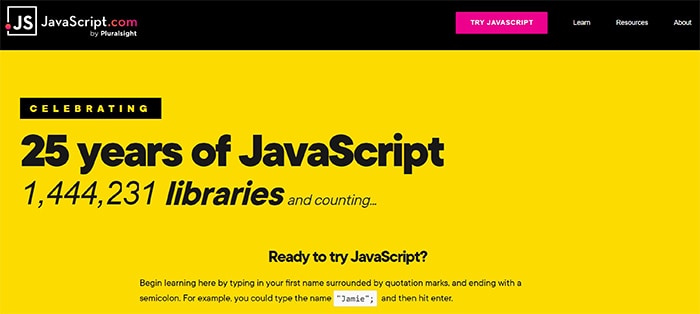
As an asynchronous language, JavaScript can be difficult to learn. Also, the programming language is single-threaded, using the asynchronous nature in a different way than other programming languages. JavaScript is different from other languages like Java, C++, Ruby and Python, so the rules are different and require fresh learning. So, this should not be the language to learn first; doing so could make picking up other languages more challenging.
Having good programming knowledge is important for learning JavaScript. Core Java is sufficient to get started with JavaScript. Also, a programmer needs to learn HTML and CSS. These are fairly easy to learn, so one will prepare to embrace the different JavaScript concepts. Besides, knowledge of HTML and CSS simplifies the process of creating projects from the ground up and applying JavaScript concepts to make the pages responsive.
Note:
Learning JavaScript is not the same as picking up CSS or HTML. In a self-taught experience, becoming proficient in JavaScript could take six to nine months. Part of this duration is spent learning to think like a programmer. This is helpful when learning other languages in the future. To learn faster, one can try a coding boot camp, which can take 15 weeks to acquire the skills.JavaScript gives the website life. HTML helps define the structure of the content, while CSS defines the style or website design. It’s not easy finding an application that does not use JavaScript in a way, as this programming language makes the user experience smooth and interactive. JS is used for mobile app development and is also a powerful tool for data science and machine learning.
Using JavaScript offers several benefits, including speed. The programming language is fast, running in the client-side browser. JS is not hindered by network calls to the server. Second, JavaScript is popular, so there are many resources on the internet. Another benefit is the interoperability of the programming language, as JavaScript plays well with other languages in different applications. Because this is a client-side language, demand on the server is reduced.
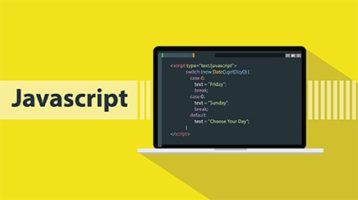
Besides the benefits, one should keep in mind the challenges of using JavaScript. The disadvantages include client-side security. The code executes on a user’s computer and could be exploited by individuals with malicious intent. Also, different browsers interpret JavaScript differently, which complicates the process of creating cross-browser applications.
Mastering JavaScript and related technologies helps one develop interaction-rich web pages. To qualify for hacking using JavaScript, it’s important to pursue certifications, like the JavaScript Developer Certificate on w3schools. This is a beginner-level certification that verifies the candidate’s ability to manipulate the HTML code. There are many developer courses that offer certifications to prove qualification.
2. Python
Python is a high-level interpreted general-purpose programming language. The language offers a design philosophy that focuses on code readability using significant indentation. The language’s object-oriented approach and constructs help programmers write logical and clear code for large and small-scale projects. Python is a recommended programming language for hacking. Also, Python is often used for building software and websites, conducting analysis and task automation.
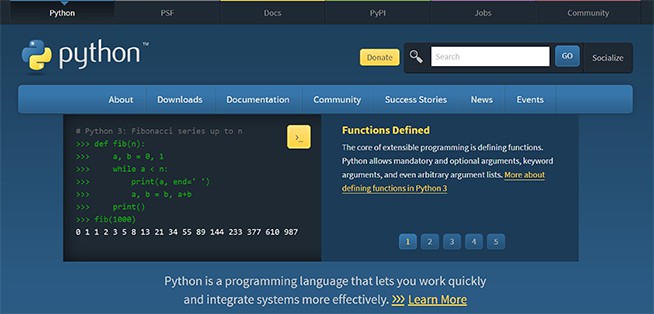
Python is considered a good programming language for beginners. Because this is a high-level language, the programmer can focus on what to do instead of how to do it. Considering a scale of 1 to 10, ordering languages from the easiest to the most difficult, Python comes in at number four in difficulty. This makes the language fairly easy to learn and apply. One can become a Python developer with under one year of experience.
To boost a programming career, Python is recommended among the top programming languages to learn. Before getting started with learning Python, there are a few things to keep in mind. First, learn the differences between the back-end and front-end. The front-end is what is visible when one visits a website, while the back-end is what happens behind the scenes. Also, understand the things one could do with Python. Learners should ensure Python is installed on the Mac or PC, as not having access to the resources makes learning impossible.
Generally, Python takes about six months to learn and understand the fundamentals. However, one can learn enough to create the first program in minutes. Mastering Python’s array of libraries can take several months or even years. Anyone with experience writing code before will find picking up Python easy.
There are several reasons to embrace Python for hacking. First, the language is easy to learn, read and write. The programming language includes English-like syntax, making understanding the code easy. Second, Python’s simplicity offers improved productivity. The developer focuses on solving the problem instead of trying to understand the language. Third, this is an interpreted programming language, and the code is executed directly, so when an error occurs, further execution is stopped. Also, there’s a vast library of support, and the language is portable, meaning one doesn’t need to change the code to run a Python program on different platforms.
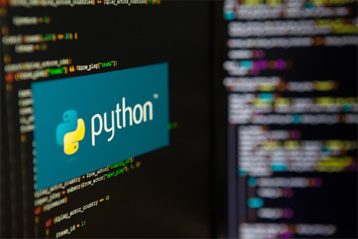
Because Python is dynamically-typed and an interpreted programming language, the code causes slow execution. Also, Python is not memory-efficient, which proves challenging when building applications that require memory optimization.
The minimum requirement for those that want to pursue a Python course is to have a bachelor’s degree. However, a postgraduate student from any field can pursue a basic-level course in Python. The learners can get several levels of certification, from entry-level to Certified Associate. Getting a Python certificate will open incredible coding opportunities, including hacking.
3. PHP
PHP is a general-purpose scripting programming language focused on web development. Originally, the language was created by Rasmus Lerdorf in 1994. PHP is a powerful tool for building interactive and dynamic web pages. When considering what programming language to learn for hacking, PHP is a recommended option that’s effective in different situations. PHP is considered one of the easiest programming languages for anyone focused on server-side applications.
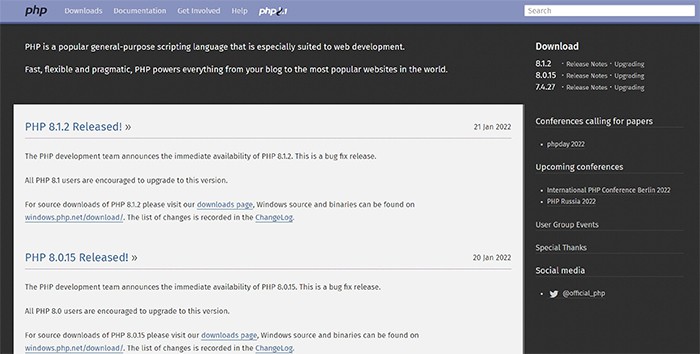
Also, PHP provides the developer with more control and ensures compatibility and easy integration. Developers use PHP to manage dynamic content, session tracking, databases and encryption.
Generally, PHP is an easy-to-learn programming language, especially if one is just starting to learn programming. Like any programming language, PHP offers different coding rules, algorithms and abbreviations. Learning the language is easy or challenging, depending on one’s approach to learning.
Pro Tip:
Previous knowledge of PHP is not mandatory to learn the programming language. The only thing needed is to have some knowledge of basic HTML. Typically, a PHP course is divided into sections, including set-up and installation, programming basics and databases, and some courses offer a project challenge that the student can complete to apply learned skills.Learning PHP, like any other language, requires commitment and can take three to six months, depending on how much time one invests in the process. PHP offers a favorable syntax, making the language a good starting point. This programming language is great for anyone interested in exploring back-end web development. To learn PHP faster, maybe in a month, one needs prior coding knowledge. For quick learning, the focus should be on getting the basics of the programming language.
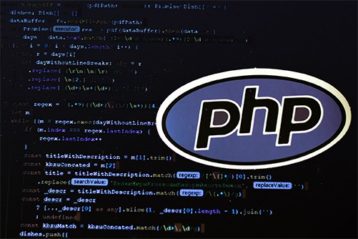
PHP is a suitable programming language for developing web applications. PHP is the right language for an application that runs many requests to a server per minute, offering easy integration to different types of servers. PHP is a secure language that offers versatility, and PHP is good for website performance, which helps retain customers if the technology is used to develop an ecommerce platform.
The first benefit of using PHP is that the language is open-source and free, so there is no cost in using the language for web applications. Second, PHP is platform-independent, so applications can run on any operating system, including Windows, Linux and Unix. PHP offers a fast loading rate, even on slow internet. For someone trying to explore programming, PHP offers a fair learning curve, as the language is simple and straightforward. PHP also comes with a built-in database module, which makes connecting to a database easy and reduces time and effort in the development cycle.
The criticisms for PHP include that it’s not that secure because of the language’s open-source nature. Also, PHP is not recommended for massive content-based applications. Besides, PHP frameworks are not equivalent in performance.
Because PHP is widely used, certifications will help an individual to demonstrate skills in using the programming language. An example of qualification one can earn is the Zend Certified PHP Engineer, which is an industry-wide standard.
4. C Programming
C is a procedural, general-purpose programming language. By design, the programming language offers constructs that help the developer map efficiency to machine instructions. Versatility and robust libraries contribute to C’s status as one of the programming languages used for hacking. The language supports lexical variable scope, structured programming and recursion. Some examples of C programming in use include operating systems, language compilers, text editors, network drivers, print spoolers and databases.
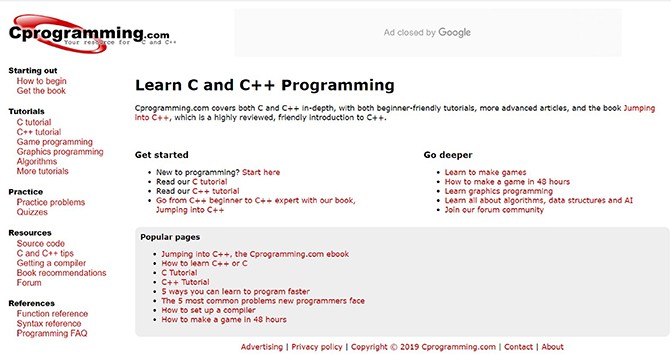
One of the reasons people choose C programming is simplicity. The programming language is highly portable, making programs created using the language efficient and fast. Learning the language is easier than any other, as one can quickly grasp concepts. There are not many symbols and keywords involved, and the learner doesn’t need to be a computer science expert to get started.
There’s no definite prerequisite to getting started with learning C programming. One only needs to understand how things related to programming work, think mathematically and be logical in the steps. One needs a few tools, including a compiler, which converts code into an executable file. There are compilers specific to C and C++ programming. Start with the fundamentals of flowcharts, have a computer, and look for online tutorials if opting not to enroll in a course.
Note:
As a beginner, learning C programming is achievable in about 15 days. This means the basics, including syntax like pointer, array and others. Some of the basics to explore while learning include functions, if-else, loops, basics of arrays and printf/scanf functions. These can take about a week to grasp. Gaining an excellent grasp of C programming takes a bit more time, as there are advanced concepts that require practice and time.C is the building block of many programming languages, so learning the language helps one understand the basic structure of how things work. The language is suitable for beginners who want to start with the knowledge that can help in building skills gradually. C programming contains fewer libraries than other high-level languages, so the language helps the user to build analytical skills. C is ideal for building compilers, text editors and operating systems as the language is fast in execution time.
C programming offers many benefits. This is considered the most fundamental programming language and is often taught first in many computer science degrees, and funnily enough, it is a big reason why many hate computer science. C is a powerful and efficient programming language that contains different data types and operators, giving the programmer a big platform to perform different kinds of operations. Also, C is flexible, which helps one run code on any machine without making changes. C is structure-based, which means complex problems are presented in smaller blocks or functions, which helps with testing and maintenance. Because of dynamic memory allocation, the developer can tell the amount of memory required by objects in the program.
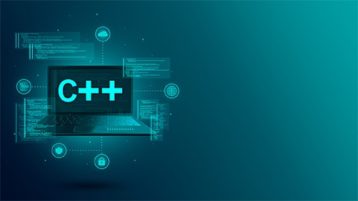
Despite being a vast language, C does not support OOPs concepts like abstraction, inheritance, data hiding, encapsulation and polymorphism. C only follows a procedural programming approach. The language also lacks exception handling, which is an important feature of programming languages that helps the developer to catch errors.
To prepare to enter the job market for C programming jobs, there are a few certifications one can pursue. Examples include C Certified Entry-Level Certification. These certifications require taking a short course, after which the institution awards a certification to prove the programmer acquired the required skills.
5. SQL
Structured Query Language (SQL) is a domain-specific language that helps in programming and designing for data management in a relational database system. SQL is also used for stream processing in relational data stream systems. Essentially, this programming language helps the developer communicate with databases to manage the data contained in the database. SQL offers logic directives, looping and variables. However, this is not a language like C++ or Java. Instead of using this as a programming language for designing apps and websites, SQL enables storing, manipulating and retrieving data in databases. When looking to learn programming languages to become a hacker, SQL is one of the languages a programmer should embrace to get equipped.
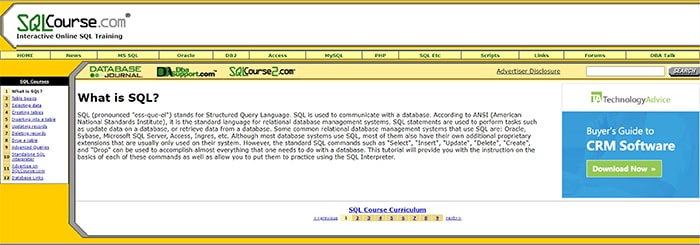
Generally, SQL is easy to learn. If one already has programming skills for other languages, it’s easier to learn SQL in weeks. As a beginner with no other programming skills, learning SQL can take longer. One of the ways to explore SQL education is to work on different projects, so start building websites that require database integration. Start with the basics and connect the websites to read and write data to a database.
The basics of SQL can take two to three weeks to master. This knowledge is enough to start building projects and connecting to SQL databases. However, to start using the language effectively, it’s important to acquire more skills and be more fluent, so learning advanced concepts applicable in building robust projects can take time. In the first two to three days, one can learn the commands and how these commands are used. Platforms like w3schools provide useful resources for beginners.
SQL is a suitable resource when building projects that require a connection to a database. The language helps the developer to establish communication between the client-side and the database. SQL is the standard language for projects that involve relational database management systems. Statements in SQL perform tasks like data retrieval or updates from the database.
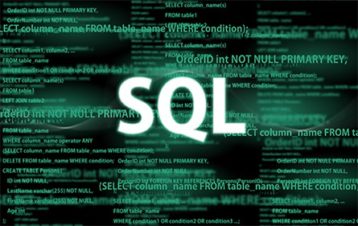
One of the reasons to use SQL is that this option is a high-speed programming language. The user can efficiently and quickly retrieve records from the database. Also, in standard SQL, the process of managing the database system is easy, as one does not need a lot of code to manage the database. Another benefit is portability, as SQL is used in laptops, servers, PCs and mobile phones.
Despite the benefits, there are also a few downsides to using SQL. The language comes with a difficult interface that can make a beginner uncomfortable while managing the database. Also, some versions can be costly, so programmers cannot access the service.
To become an SQL developer, complete a qualification in software development or enroll in a bachelor’s degree program focusing on software development. Also, consider taking an internship while studying. There are many online and in-person courses and boot camps that help beginners acquire the skills to start working on projects in SQL.
6. Ruby
Ruby is a high-level, interpreted, general-purpose programming language that supports multiple paradigms. The language was designed with a focus on productivity and simplicity. When using Ruby, everything is treated as an object, and this includes primitive data types. This is a highly portable language that can serve many purposes. Ruby is great for building static websites, desktop applications, automation tools and data processing services. Also, Ruby is used for DevOps, web servers, web crawling and web scraping. When considering the top five programming languages for hacking, Ruby should be among the options listed.
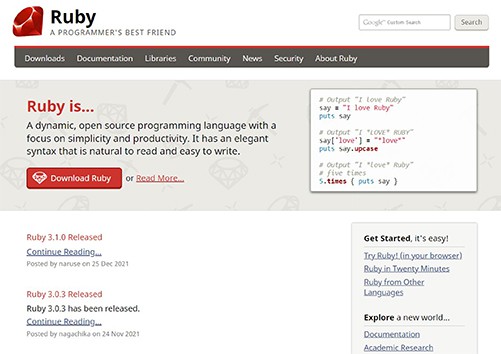
Ruby uses elegant syntax and is known for simple English words that are easy to understand. Ruby is not difficult to learn, there’s a thriving community, and the language provides a straightforward workflow. This is one of the best programming languages for beginners, as Ruby offers beginner-friendly frameworks. However, Python is a bit easier to learn.
Pro Tip:
To learn Ruby programming, one needs to be equipped with a few tools. For a start, having the basic fundamentals of programming and computer science is helpful. Because Ruby is object-oriented, understanding object-oriented concepts will help. Knowing how to use a relational database like MySQL and SQLite will be essential.On average, learning Ruby programming takes about one month. However, this timeline varies depending on prior programming knowledge. The duration also depends on the way one learns the language and the amount of time allocated to practicing the programming language. One month is enough to understand the basics, but polishing skills and getting to the advanced level will take a bit more time.
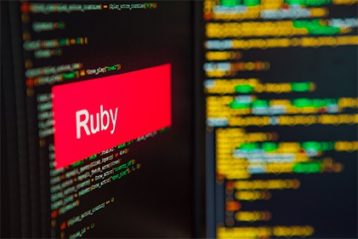
Ruby is a highly portable programming language that can serve many purposes. This is a great programming language for building static websites, desktop applications, automation tools and data processing. The language is effective for DevOps, web servers, crawling and web scraping. Ruby is the ideal language for large software systems. The most successful applications are in the Ruby on Rails framework, used for web applications.
There are several benefits of using the Ruby programming language. First is cost-effectiveness, as Ruby is free because the language runs on Linux, an open-source framework. Using Ruby also makes managing existing code easier. Another reason is the security measures built within the framework. This is also a high-performance programming language, ideal for applications that expect a lot of traffic. Because of the language’s flexibility, Ruby is ideal for building applications that rely on the back-end and front-end capabilities of the language. Most importantly, there’s a large community online full of developers that constantly improve code and provide support.
The few downsides of Ruby include that this is still seen as a niche language with low popularity. This means there is a limited number of developers for the language, which can be challenging when building a big project.
Most Ruby developers come with a bachelor’s degree in a related programming field like computer science. Having experience with databases or coding skills in object-oriented programming is an effective starting point when learning Ruby.
7. Perl
Perl is a general-purpose, high-level programming language originally designed for text manipulation but is now used in a wide range of tasks, including web development, system administration, network programming and GUI development. Often, Perl is used for mission-critical projects. Perl is portable and cross-platform and borrows the best features from languages like BASIC and C. One reason to consider Perl is flexibility, as the language supports both object-oriented and procedural programming.
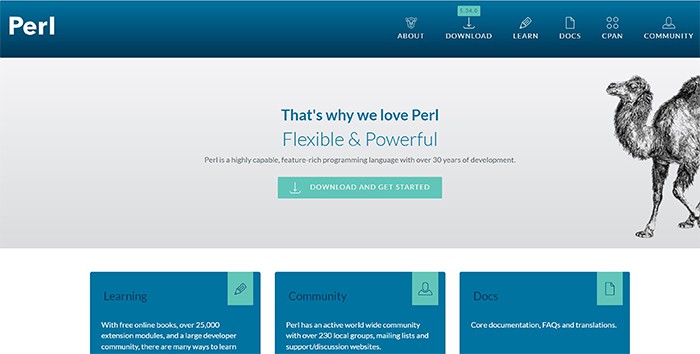
Learning Perl does not come with many requirements. To get started, set up the development environment that helps with practicing the programming language. Some of the tools to have include learning how to think in algorithms. Find a logical thinking programming book to learn the skills and concepts that make Perl an effective programming language.
As a simple guide, expect to take at least two months to learn the basics of the Perl programming language. This means one only needs to take an hour a day to study. To use Perl professionally in ethical hacking scenarios, one needs up to six months to get the understanding needed to apply the tools.
There are many scenarios to explore using the Perl programming language. This is an ideal language for system administration, CGI, network programming, bioinformatics, finance and other applications, such as GUIs. This is the go-to language for HTML parsing, regex and JSON manipulation. Perl is the best language for any programmer looking for simple ways of manipulating text.
Some of the benefits of using Perl are that the language is open-source, available to use for free and offers resources to help anyone learn. Second, Perl is portable, so one can run the language on any platform. Third, Perl is versatile, meaning various tasks can be done on the same program instead of running different programs. To use Perl, no compiler is required, so a programmer with basic programming skills can do this themselves.
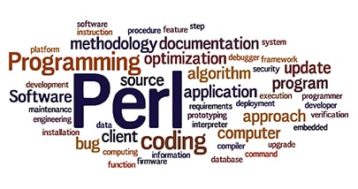
Fixing bugs in code can be difficult for the beginner programmer. Perl requires maintenance, and it’s not easy to know when something will go wrong. Another downside is that the language relies too much on math, so there are many mathematical symbols one needs to master before working with the language.
Typically, software engineers get started with Perl by acquiring a bachelor’s degree. Some positions require on-the-job experience, which can substitute for formal education in some positions. Get a certification to improve the chances of securing a job after training for Perl programming.
8. Bash
Bash is a command and shell programming language designed by Brian Fox as a free replacement for the Bounce shell. The programming language is widely available on different operating systems and is the command interpreter on most Linux/GNU systems. Bash scripting is an important skill to have for any Linux system administration job. Some of the uses of Bash programming include data crunching, system administration, web application deployment, creating custom scripts and automated backups.

Bash is easy to learn, especially if one has exposure to other computer programming languages like Java, C++ and C. Patience and eagerness are needed to learn the different concepts that define the functionalities of the programming language. Anyone can find materials online to get started with learning Bash, and there are forums for support whenever assistance is needed.
The requirements to learn Bash programming are simple. First, check what operating system the computer has. If the operating system is Unix-based, like Linux or macOS, the computer is likely to have Bash installed. For the Windows OS, the starting point is to install Git Bash, which makes using Bash possible. With these tools, one can learn command-line interfaces, then write scripts following a tutorial.
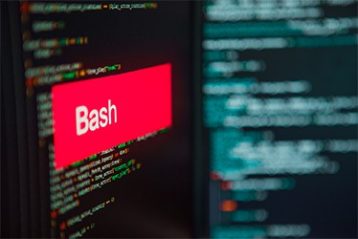
Getting started with the basics of Bash programming takes just two days. Like other programming languages, Bash syntax offers components like loops, variables, logic and conditional expressions. Learning and understanding how to use the components for complex scripts can take a few weeks. Depending on experience with other scripting languages and command-line interfaces like Perl or Python, picking up Bash can be easier.
Some of the benefits of Bash programming include that the language allows the programmer to automate operations, is ideal for running a sequence of commands in a single command and is easy to use. Also, the language is portable, which simplifies the process of executing in any Unix-like system without modifications.
The disadvantages of the Bash shell include that the programmer requires extra care to eliminate circumstances that can cause harm. Also, the execution speed is slow, and there are flaws in design and implementation.
To get work for Bash programming, pursuing an online course and getting a certification is advisable. There are many Bash shell scripting courses that equip a programmer with the right skills to get into the market.
What is the Most Common Programming Language that Hackers Use?

Python is considered the de-facto programming language for hacking. Hackers use the language for scripting on-demand programs on the go. Python lets one do anything when used in the right way. One of the reasons Python is popular for hacking is that the programming language is easy to read and can run without requiring compilation. Also, Python is suited for web server hacking, as this language helps the hacker identify the target network and make prototyping easier.
In the coding community, Java is also a widely used language for hacking. Other popular options for hacking include C programming, JavaScript and PHP.
What is the First Coding Language to Learn for Hacking?
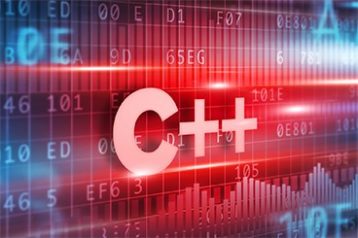
If one is looking for how to learn hacking and coding, C++ is a recommended first language for hackers. C++ is considered the best programming language for business applications. Most business software programs are licensed and require paid activation, so hackers must conduct reverse engineering to break into these programs. By learning C++, one can break business software or create a unique hacking application.
What are the Hacking Attacks that Coding is Used in?
After learning a hack programming language, the next step is to understand the most common types of cyberattacks a hacker can perform. This is important when practicing to pursue ethical hacking as one can provide suggestions for improvements in security. Some of the common hacking attacks performed on computer systems are given below.
- Malware: Attackers use different methods to install malware into a target computer, but at a point, a user is required to take action to install the malware. The strategy can include downloading a file or clicking a link, or even opening an attachment, but often the hacker hides the malware installer within.
- SQL Injection Attack: This type of attack targets an SQL server. An SQL attack uses malicious code to divulge information. This can be problematic if the server stores user information from the website, like passwords and credit card details. An SQL attack exploits vulnerabilities that make it easy for the SQL server to run malicious code.
- Denial-of-Service (DoS): Imagine sitting in traffic, and cars are packed on the road as far as anyone can see. Obviously, in this case, the road will not handle the traffic. In the same situation, if a website is flooded with too much traffic to handle, the server is also overloaded, so the website cannot serve up content to visitors who want to access the site. This is what is called a Denial of Service attack when performed by someone for malicious purposes.
Can Programming Languages be Used for Ethical Hacking?
Yes. One can use the top languages for hacking to perform ethical hacking operations. Ethical hacking is an authorized attempt to access computer data, a computer application or a system. Through ethical hacking, one can duplicate attackers’ actions to understand where there are vulnerabilities in the system. Explore ethical hacking to understand how to get started in this profession. Some of the programming languages suitable for ethical hacking include Python, SQL, C++ and Java.
Do You Need to Know a Programming Language to Prevent Hacking?
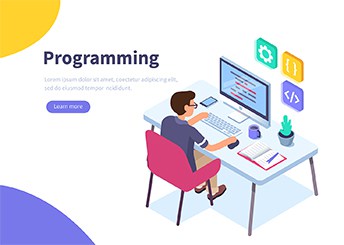
Yes, learning the programming languages that are used in cyberattacks is essential to preventing hacking. Some of the benefits of preventing hacking include reinforcing security protocols, preventing industrial espionage and preventing computer system downtime. Through hacking, one can perform penetration testing, which helps to strengthen network security. Programming languages for cybersecurity will help organizations embrace preventing measures to deal with security breaches in the future.

